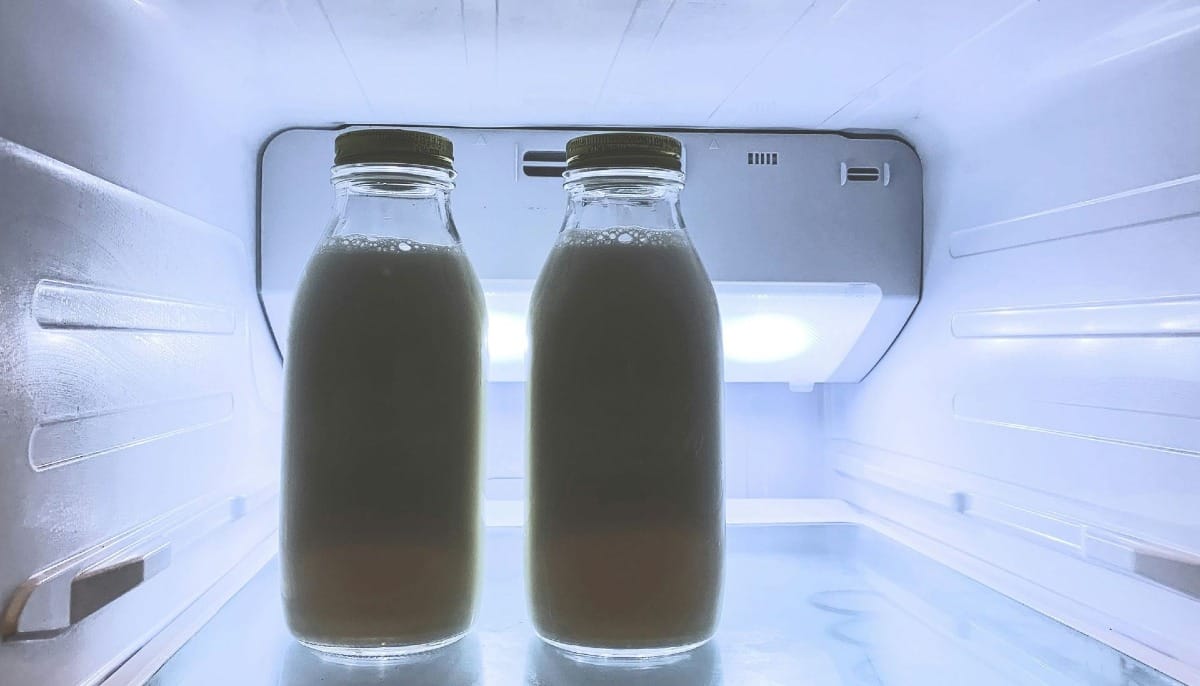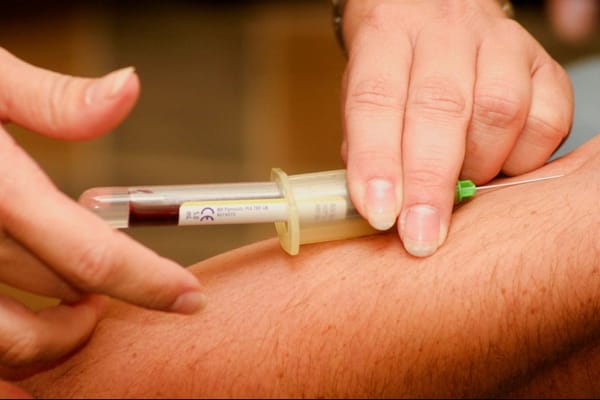The consumption of raw milk, despite its growing popularity among certain groups, poses significant health risks due to the potential presence of harmful bacteria and pathogens. This article explores the dangers associated with drinking unpasteurized milk, the importance of pasteurization, and why health experts strongly advise against consuming raw dairy products.
Albuquerque Legalizes Raw Milk
Albuquerque has joined New Mexico in allowing retailers to sell raw milk products after Mayor Tim Keller signed a new ordinance in December 2023. 1 The measure, approved by the Albuquerque City Council in November, aligns the city with state regulations and neighboring areas that already permitted raw milk sales. 1 5 While proponents argue for consumer choice and potential health benefits, the Centers for Disease Control and Prevention cautions about the risks associated with unpasteurized milk, particularly for vulnerable populations. 1 3 Retailers interested in selling raw milk in Albuquerque will need to obtain a permit from the city's Environmental Health Department. 1 4
Sources:
- (1) Raw milk ordinance signed in Albuquerque - KOAT
- (2) KOAT.com on X: Raw milk ordinance signed in Albuquerque - X
- (3) The health risks of drinking raw milk - Albuquerque - KOAT
- (4) [PDF] ordinance - City of Albuquerque
- (5) Mayor signs ordinance allowing raw milk sales in Albuquerque
Understanding Raw Milk
Raw milk is milk in its most natural form, obtained directly from cows, goats, or other animals without undergoing any processing or treatment 1 2. Unlike commercially available pasteurized milk, raw milk is not heated to kill potential pathogens. Instead, it is simply filtered and rapidly cooled to just above freezing temperatures 1.
The composition of raw milk is unique, containing a variety of components that contribute to its nutritional profile:
- Butterfat: Raw milk contains a high amount of butterfat, which rises to the top, forming a cream layer 1. This natural separation is not seen in homogenized milk.
- Bacteria: Raw milk contains both beneficial and potentially harmful bacteria. The good bacteria are thought to contribute to gut health and boost nutrient absorption 1.
- Enzymes: Natural enzymes present in raw milk are believed to aid in digestion 2. These enzymes are typically denatured during pasteurization.
- Vitamins and Minerals: Raw milk naturally contains 21 minerals and 13 vitamins 1.
One of the key characteristics of raw milk is its short shelf life. Once opened, a container of raw milk typically lasts about 10 days when properly refrigerated 1. This is in contrast to pasteurized milk, which can have a longer shelf life due to the elimination of bacteria through heat treatment.
Proponents of raw milk often cite potential health benefits, including improved allergy resistance and better digestibility 1 2. However, it's crucial to note that these claims are controversial and not supported by robust scientific evidence. The FDA and CDC strongly caution against consuming raw milk due to the risk of foodborne illness 3 4.
The production of raw milk typically occurs on small farms where cows are allowed to graze freely on pasture 1. This diet, consisting of clover, barley, grasses, and other natural vegetation, is believed to contribute to the milk's flavor and nutritional content. However, it's important to understand that even in these controlled environments, the risk of bacterial contamination remains 3 4.
In many regions, the sale of raw milk for human consumption is heavily regulated or prohibited due to safety concerns 3 4. Those who choose to consume raw milk should be aware of the potential risks and the importance of sourcing from reputable, licensed producers who adhere to strict hygiene and testing protocols.
Sources:
- (1) Discovering Raw Milk - Simple Bites
- (2) Back to basics: What IS raw milk? - Orchard House Creamery
- (3) Raw Milk Misconceptions and the Danger of Raw Milk Consumption
- (4) Raw Milk | Food Safety - CDC
Health Risks of Raw Milk
Raw milk consumption poses significant health risks due to the potential presence of harmful bacteria and pathogens. The Centers for Disease Control and Prevention (CDC) reports that from 1998 through 2018, there were 202 outbreaks linked to drinking raw milk, resulting in 2,645 illnesses and 228 hospitalizations. 1 These numbers likely underestimate the true impact, as many foodborne illnesses go unreported.
The primary dangers of raw milk arise from bacteria such as Salmonella , E. coli , Listeria , and Campylobacter. 1 These pathogens can cause severe foodborne illnesses, often referred to as "food poisoning." Symptoms typically include:
- Vomiting
- Diarrhea
- Abdominal pain
- Flu-like symptoms (fever, headache, body aches) 1
While most healthy individuals may recover from these illnesses within a short time, some can develop chronic, severe, or even life-threatening conditions. The risk of an outbreak from drinking raw milk is 150 times higher than from pasteurized milk. 2
Certain populations are at higher risk for severe complications from raw milk consumption:
- Children and teenagers: They are particularly vulnerable, with 59% of illness outbreaks due to raw milk consumption involving young people. 2
- Pregnant women: Listeria in raw milk can cause miscarriage, illness, or death of newborns. 1
- Older adults: Their weakened immune systems make them more susceptible to severe foodborne illnesses.
- Individuals with compromised immune systems: This includes people with HIV/AIDS, cancer, and diabetes. 1
One particularly dangerous complication associated with raw milk consumption is hemolytic uremic syndrome (HUS), which can result from E. coli O157:H7 infection. HUS can lead to kidney failure and other severe health problems, especially in children. 3
Despite claims by raw milk advocates, scientific evidence does not support the alleged health benefits of unpasteurized milk. The nutritional content of milk is not significantly affected by pasteurization. Both raw and pasteurized milk can cause allergic reactions in people sensitive to milk proteins. 1
It's important to note that the safety measures taken by modern dairy farmers, such as maintaining animal health and hygienic milking conditions, do not eliminate all risks. The CDC states that even with regular testing, low levels of microbial contamination can be missed, potentially leading to illness. 3
In light of these risks, health experts, including those at the FDA and CDC, strongly advise against consuming raw milk or products made from raw milk. The potential dangers far outweigh any perceived benefits, especially for vulnerable populations. Pasteurized milk provides the same nutritional benefits without the associated health risks, making it the safer choice for consumers. 1 2 3
Sources:
- (1) Unpasteurized Milk Can Pose a Serious Health Risk - FDA
- (2) Myths and facts about raw milk - Safe Food & Water
- (3) Dangers of raw milk arise from bacteria - UCLA Health
Vulnerable Populations
Certain groups are particularly vulnerable to the health risks associated with raw milk consumption. Children, pregnant women, older adults, and individuals with weakened immune systems face heightened dangers when exposed to the pathogens potentially present in unpasteurized dairy products.
Children are especially susceptible to foodborne illnesses from raw milk. According to the Centers for Disease Control and Prevention (CDC), 59% of outbreaks linked to raw milk consumption involved children 1. This vulnerability is due to their developing immune systems and smaller body size, which makes them more susceptible to severe complications. One study found that young children were involved in 59% of illness outbreaks due to raw milk consumption 2.
Pregnant women are another high-risk group. The bacteria Listeria , often found in raw milk, poses a significant threat to expectant mothers. Listeriosis can lead to miscarriage, stillbirth, or severe illness in newborns 3. The Food and Drug Administration (FDA) strongly advises pregnant women against consuming raw milk or products made from it 3.
Older adults, typically those over 65, are more vulnerable to foodborne illnesses due to weakened immune systems that come with age. They may experience more severe symptoms and complications from pathogens found in raw milk 1.
Individuals with compromised immune systems, such as those with HIV/AIDS, cancer, or organ transplant recipients, are at a higher risk of severe illness from raw milk consumption. Their bodies are less equipped to fight off infections, making them more susceptible to complications from foodborne pathogens 3 1.
The consequences of raw milk consumption for these vulnerable groups can be severe. For instance, children infected with E. coli O157:H7 from raw milk are at risk of developing Hemolytic Uremic Syndrome (HUS), a potentially life-threatening condition that can cause kidney failure 3. In a 2006 California outbreak, two children developed HUS after consuming raw milk contaminated with E. coli O157:H7 4.
It's crucial to note that the decision to consume raw milk doesn't just affect the individual making the choice. Parents or caregivers who serve raw milk to children or other vulnerable individuals in their care are putting those people at significant risk. The CDC emphasizes that the risk of an outbreak from drinking raw milk is 150 times higher than from pasteurized milk 2.
Health experts unanimously recommend that these vulnerable populations avoid raw milk and raw milk products entirely. The nutritional benefits of milk can be obtained safely through pasteurized dairy products, which retain most nutrients while eliminating the risk of harmful pathogens 2. For those concerned about nutrition, following evidence-based dietary guidelines is a safer and more effective approach to maintaining health than consuming raw milk 2.
Sources:
- (1) Raw Milk | Food Safety - CDC
- (2) Myths and facts about raw milk - Safe Food & Water
- (3) Unpasteurized Milk Can Pose a Serious Health Risk - FDA
- (4) Raw Milk Misconceptions and the Danger of Raw Milk Consumption
Debunking Raw Milk Myths
Raw milk consumption has been surrounded by numerous myths and misconceptions, often propagated by proponents of unpasteurized dairy products. It's crucial to address these myths with scientific evidence to ensure public health and safety.
Myth #1: Raw milk is more nutritious than pasteurized milk.
This claim is not supported by scientific evidence. Studies have shown that pasteurization has minimal impact on the nutritional content of milk. The United States Department of Agriculture (USDA) confirms that pasteurized milk retains its nutritional value while being much safer than raw milk 1. A systematic review and meta-analysis found no significant differences in the concentrations of vitamins A, B12, and E between raw and pasteurized milk 2.
Myth #2: Raw milk can cure or prevent allergies and asthma.
This myth stems from misinterpretation of studies like the PARSIFAL study. However, the authors of this study clearly stated that their research does not allow for evaluating the effect of pasteurized vs. raw milk consumption 3. In fact, they concluded that raw milk consumption cannot be recommended as a preventive measure due to serious health risks 3. Clinical trials have shown that raw and pasteurized milk do not differ in their capacity to cause allergic reactions 3.
Myth #3: Raw milk is safe if it comes from healthy animals or organic farms.
This is a dangerous misconception. Even the healthiest animals can carry pathogens such as E. coli O157, Campylobacter, and Salmonella that can contaminate milk 4. The dairy farm environment, regardless of how sanitary or humane it is, remains a reservoir for illness-causing germs 4. Organic certification does not guarantee safety from pathogens; organic milk still needs to be pasteurized to be safe for consumption 1.
Myth #4: Raw milk has been consumed for thousands of years without problems.
This myth ignores the historical impact of infectious diseases transmitted by raw milk, including tuberculosis, brucellosis, and scarlet fever 5. Pasteurization was developed precisely to prevent these well-documented illnesses and deaths caused by contaminated raw milk 5. In developing countries today, raw milk is routinely boiled before consumption to protect against deadly milk-borne infections 5.
Myth #5: Raw milk products like cheese and yogurt are safe to consume.
This is false. Products made from raw milk can be just as dangerous as drinking raw milk itself. Between 1999 and 2008, two deaths related to unpasteurized milk were caused by infections from fresh Mexican-style cheese made from raw milk 4. Fresh cheeses made from raw milk can harbor dangerous pathogens and cause severe infections 4.
Myth #6: Raw milk builds the immune system.
There is no scientific evidence to support this claim. On the contrary, consuming raw milk exposes individuals, especially children, to unnecessary risks of foodborne illnesses. The CDC reports that 79% of raw milk-related outbreaks involved at least one person under the age of 20 4.
It's important to note that the risk of an outbreak from drinking raw milk is 150 times higher than from pasteurized milk 1. The Centers for Disease Control and Prevention (CDC), along with other health organizations, strongly advise against consuming raw milk or raw milk products due to these significant health risks 4.
In conclusion, while raw milk advocates may make appealing claims, these myths do not withstand scientific scrutiny. Pasteurization remains a crucial food safety measure that protects public health without compromising the nutritional value of milk.
Sources:














Member discussion